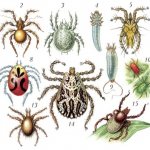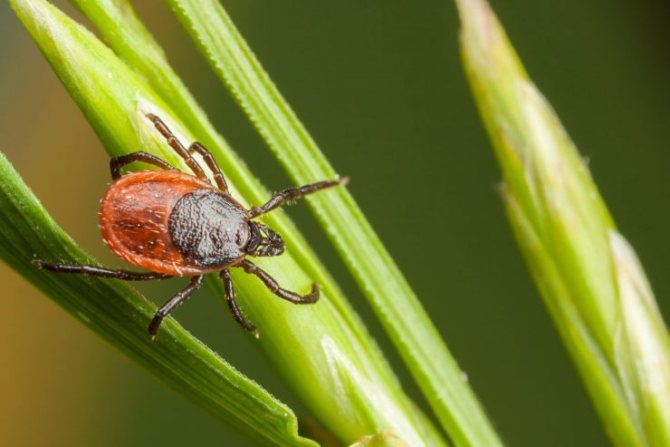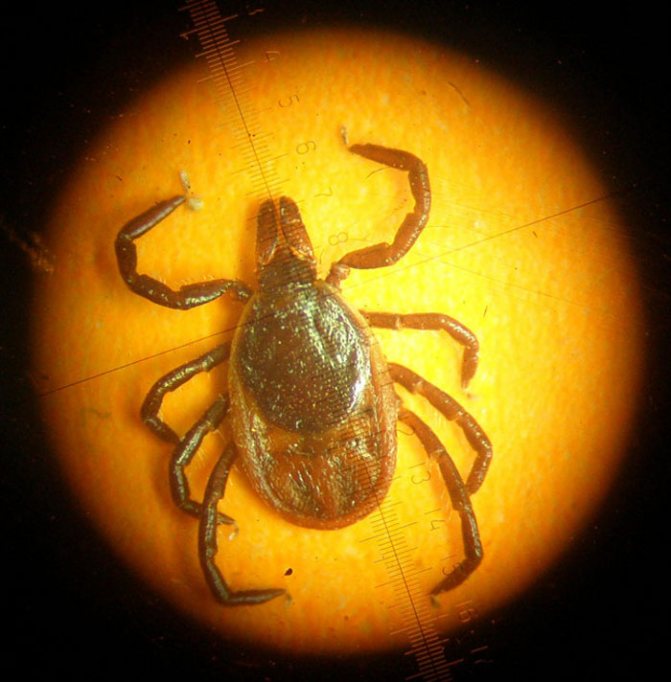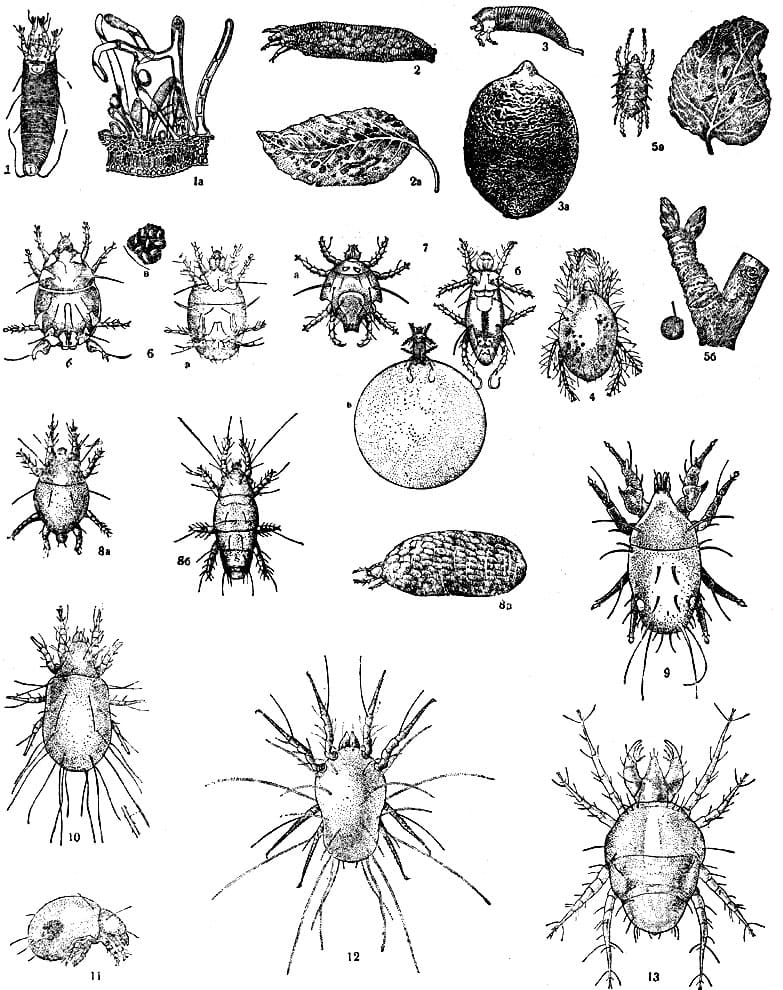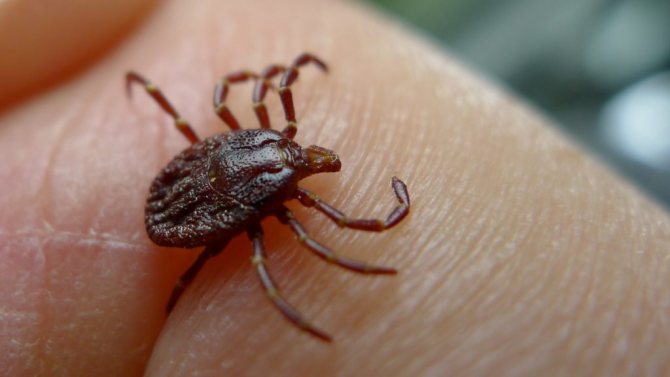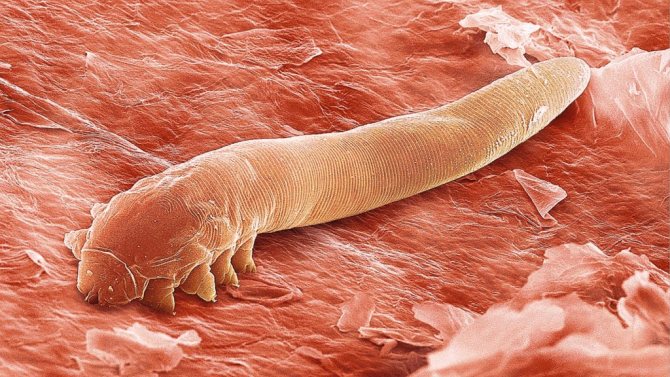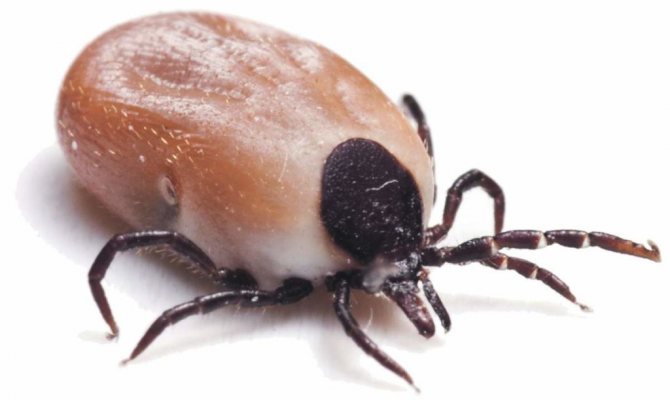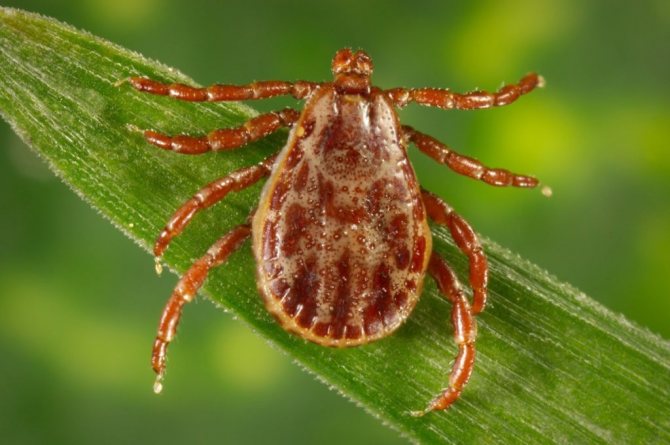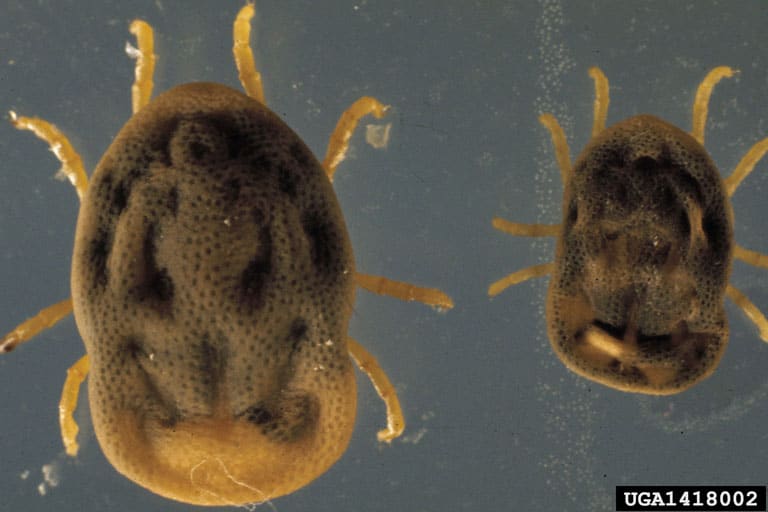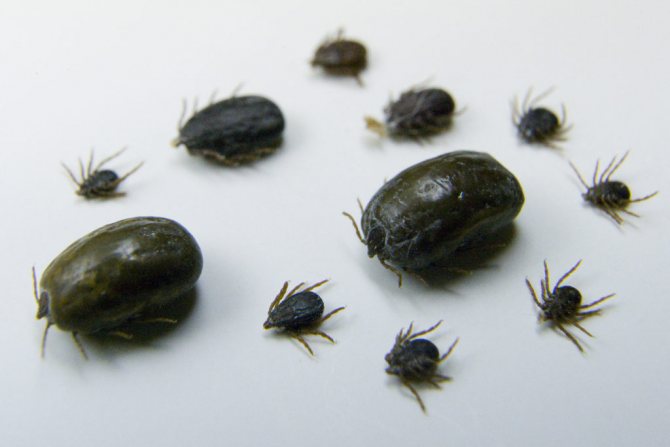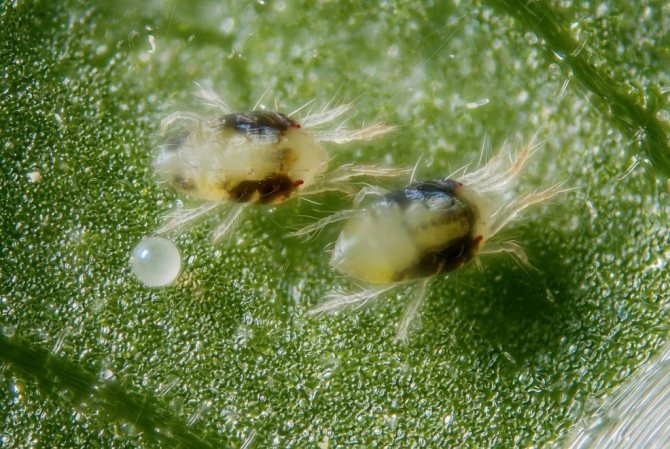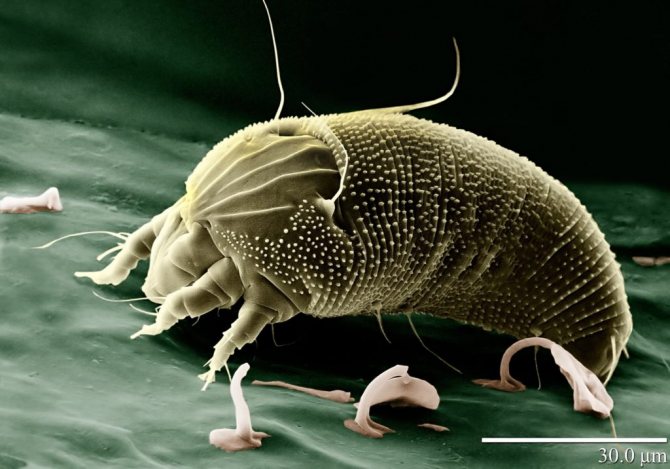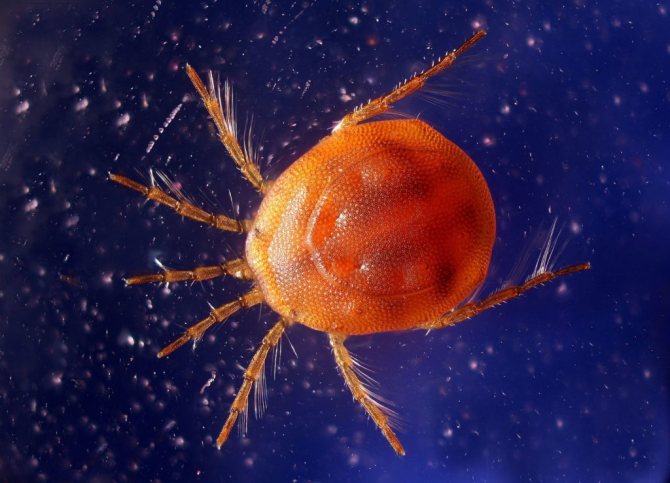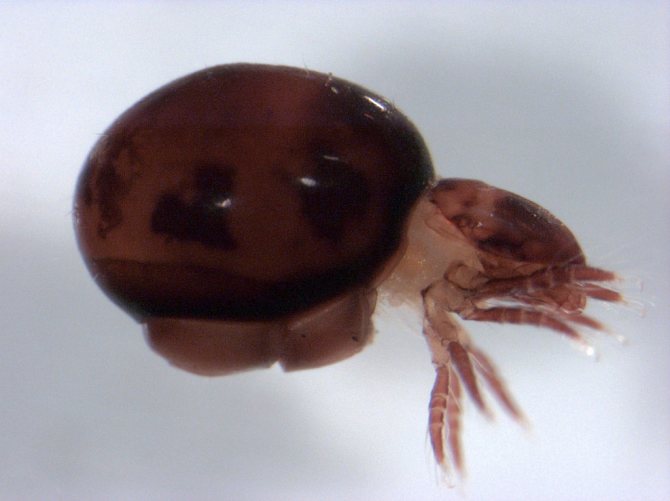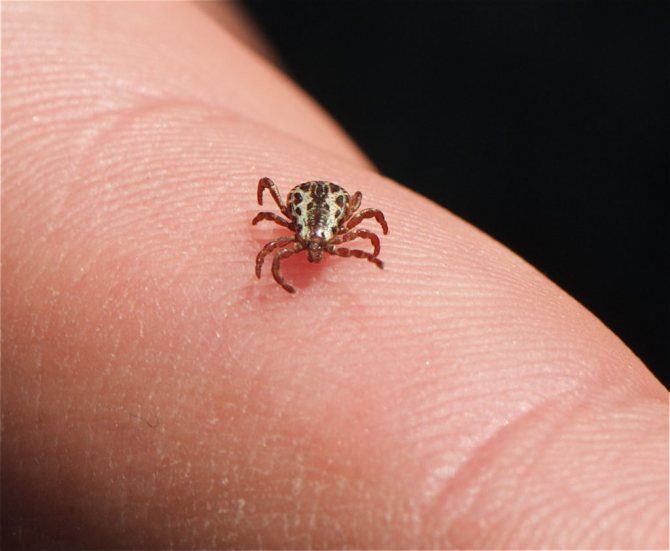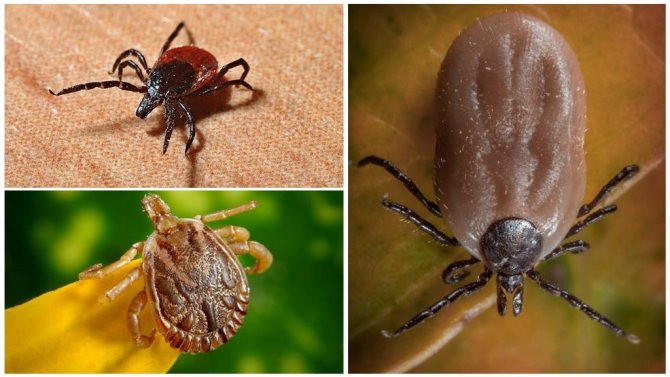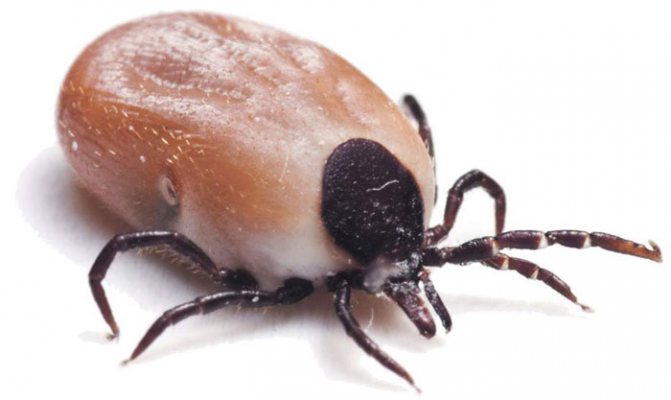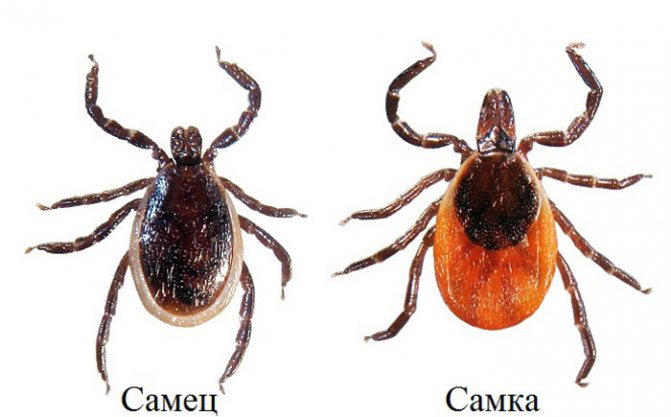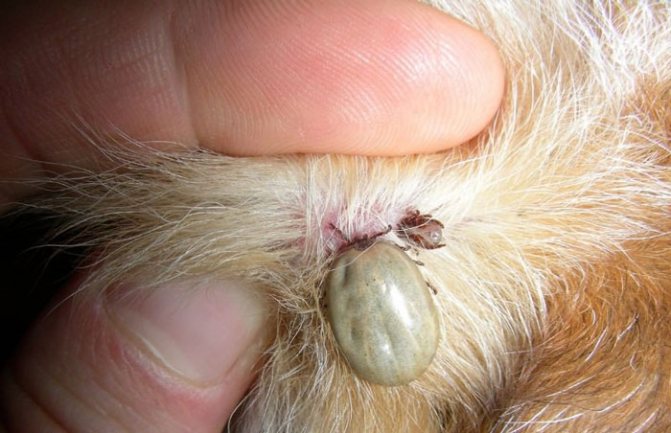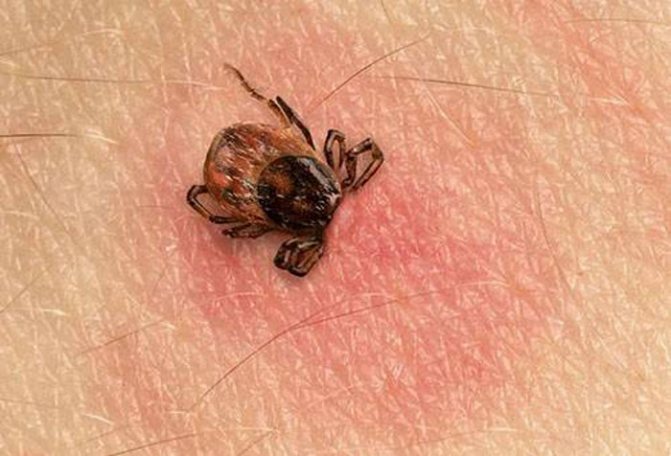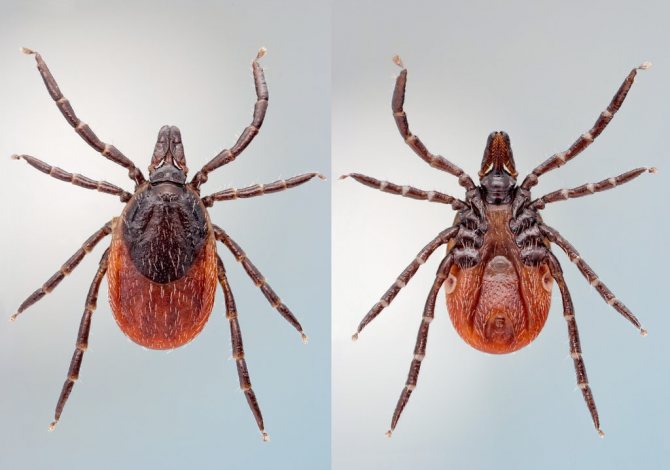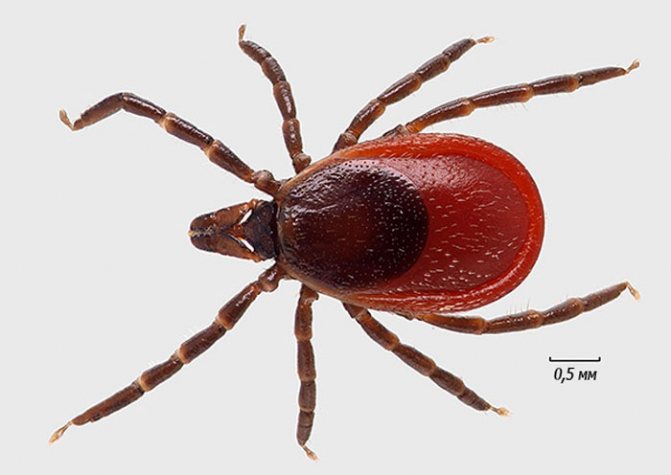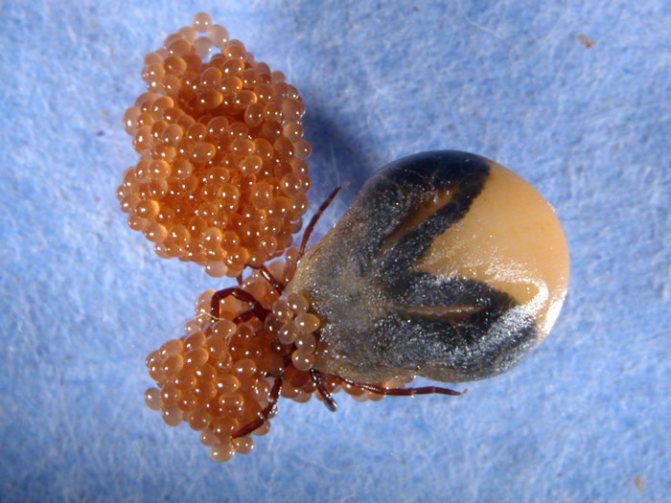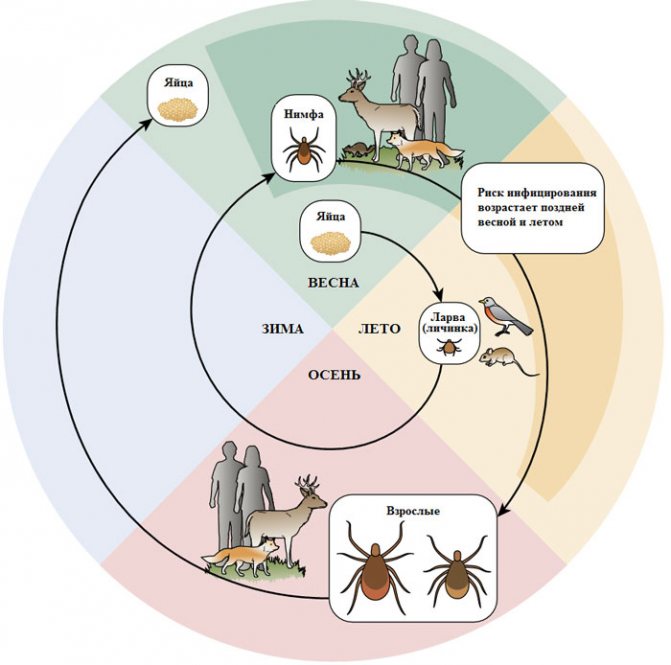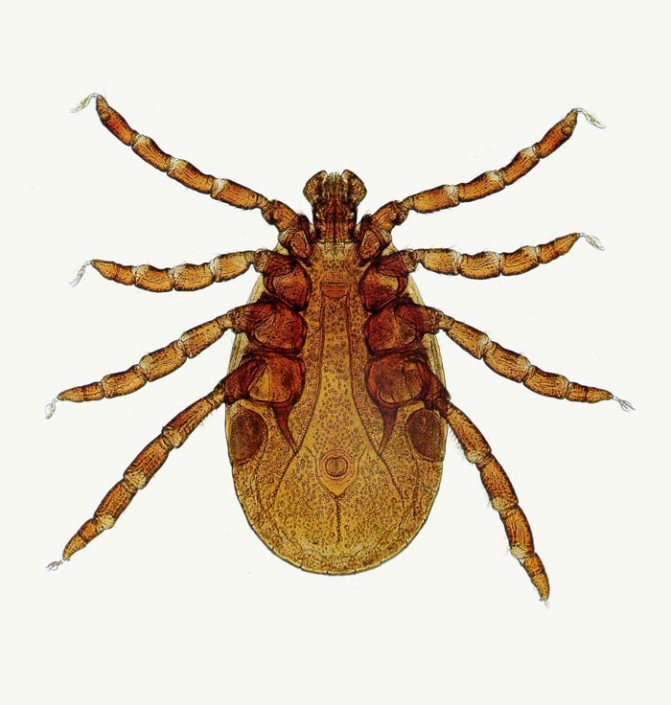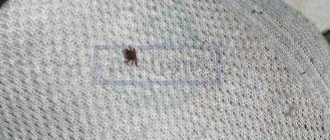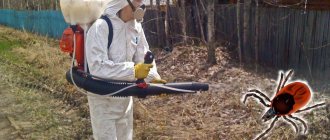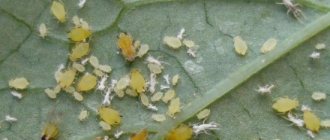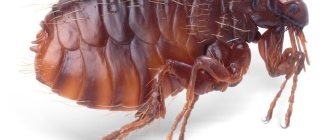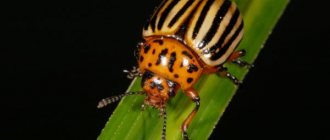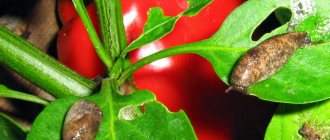- Wild animals
- >>
- Arachnids
Mite are quite dangerous and unpleasant animals that become active in the warm season. They are representatives of the oldest inhabitants of our planet, survived the dinosaurs. Evolution has practically no effect on these animals, they have survived unchanged, and live wonderfully in the modern world. Both animals and people are chosen as their victims.
general description
Each species has individual features of the body structure and its own sizes. There are flat, round, oval. There are herbal, steppe, forest, and each type, class, variety, is characterized by individual characteristics.
The largest representatives reach 3 mm, the middle ones have a body size from 0.1 to 0.5 mm. They belong to the arachnids. They do not have wings, adults have 8 legs, and young ones only 6. They have no eyes, but they are perfectly oriented and find their victims thanks to a special sensitive apparatus. In the photo you can see how they look.

There are several groups that differ in body structure. There are those in which the head is connected to the little body and represents the movable part - armored, and there are those in which the head is fused with the little body - leathery. Depending on the structure of the body, oxygen is supplied to the body. Some have a special organ, and some have air through the trachea or skin.
Sexually mature individual
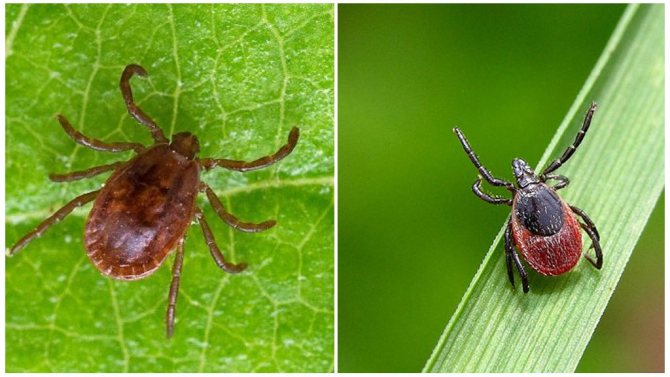

Mites
The structure of the tick is usually considered on the example of ixodid ticks as the most common in the world. This group is also the most dangerous.
External structure
The tick usually has an oblong body, where the chest and abdomen are fused together. Hungry individuals are flat above and below. Well-fed females resemble a leathery pouch. The "skin" of a tick is actually a chitinous cuticle. On the back of arthropods, the sealed cuticle forms a protective shield. In females, this shield is located only on the front of the body; in males, it covers the entire dorsal part entirely. The internal organs and muscles of bloodsuckers are located under the cuticle.
Interesting!
Some ixodid species have scutes on the underside of the body.
In the photo of a tick under a microscope, you can see the lateral appendages of the arachnid. In many species, the length of the appendages is so different that it is often impossible to understand how many legs a tick has. But all species of these animals have only 4 pairs of legs. What may appear to be the front legs are actually chelicerae and pedipalps of the tick, which are part of the structure of the oral apparatus.
On a note!
Chelicerae and palps in ticks also belong to the limbs. These limbs may once have been a pair of legs, but today they are incorporated into the mechanism of the mouth apparatus.
Head
The head is so small that the proboscis seems to be attached directly to the body. The piercing-sucking mouth organs of the tick have changed significantly in comparison with the gnawing apparatus. The tick proboscis has a hexagonal or rectangular base. The structure of the proboscis is quite complex:
- chelicerae;
- pedipalps;
- hypostom.
The latter in ixodids is equipped with teeth that help to stay on the victim. Chelicerae in some species of arthropods have turned into a kind of scissors. Suckers have grown into a hollow stylophore tube.Stylophore - protection for stylets formed by modified chelicera fingers. In bloodsuckers, these "fingers" have been transformed into a tube through which blood enters the digestive tract.
On a note!
Pedipalps (palps) are only of secondary importance and are often reduced.
Legs
The adult has 4 pairs of them, the larva has three. The legs of the tick are homologous to the limbs of insects:
- pelvis;
- swivel;
- hip;
- knee;
- shin;
- foot.
Since the tick clings to the prey first with the front pair of legs, the legs of predatory and parasitic species are equipped with hooks and suction cups that help to stay on the animal.
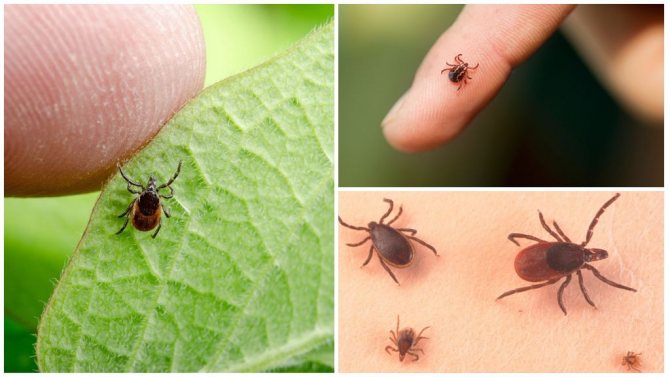

Tick appearance
In most species of mites, the pelvic part is immobile and fused with the body. Only primitive species have retained the mobility of the pelvis. Considering the microscopic size of the objects of study, it is possible to examine the segments on the legs only under a microscope under high magnification. In the close-up illustration of the legs of the arachnid, it can be seen that the segments are very similar and it is very difficult to distinguish them from each other.
Throughout life, the limbs of a tick can change. The main anatomical change occurs in the hind limbs. In predatory species, they are curved and look like ticks, with the help of which the arthropod is held on to the victim. The leading "calm" parasitic lifestyle of itch itching has thickened, shortened legs and powerful suction cups. Tetranychid ticks have glands on their legs that secrete a sticky liquid that helps them move along smooth surfaces.
Internal systems
In the diagram, an opened female ixodid tick, drunk with blood, indicating the purpose of the depicted internal organs.
The internal life support systems include the digestive and respiratory systems. The circulatory system of ticks is not developed. The analogue of the heart muscle is located on the back and has an oval shape. The aorta departs from it. The vascular system is not developed, and the blood, a white liquid in the tick, is poured into the body cavity.
The digestive system is represented by:
- mouth opening;
- two salivary glands;
- by the pharynx;
- esophagus;
- intestines;
- anal opening.
The organs of excretion of ticks include not only the latter, but also several more. The intestine has a more complex structure:
- midgut with several lateral blind branches;
- small intestine;
- hind gut.
The rectal bladder, which is one of the excretory organs, is adjacent to the hind gut.
The excretory organs, in addition to the rectal bladder, include the salivary glands located in the mouth. The salivary glands are needed by parasites to store anesthetic secretions, which are used to inject when the skin is punctured by the proboscis.
Important!
Thanks to the secretion of the salivary glands, the bite of the arthropod is invisible to the victim.
The rectal bladder is a repository for waste products, as digestion products and dead cells of the midgut enter it. Pathogens in the intestines also get here. For this reason, feces from ticks can also be hazardous to health.
Respiratory system
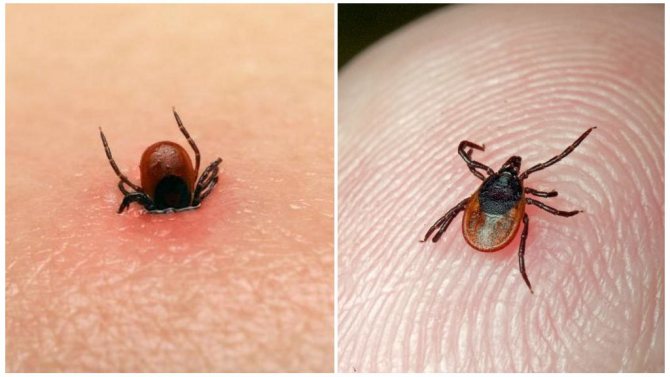

Tick bite
When a tick digs into the skin, it breathes not through the anus, but through the airways - stigma at the hind legs. When inhaled, air enters the trachea - thin tubes running along the entire body of the arthropod. Tick stigmas are protected by special organs - peritremes. In ixodids, peritreme - plates that adjoin the stigmas from the sides and back. Other groups have tubes of varying degrees of length and shape.
The respiratory system in this subclass of arthropods is very poorly understood. The question of what the tick breathes actually remains open. If we talk about the respiratory organs, then these are the trachea. If we consider the composition of gases, then the needs of arthropods have not yet been studied. There is a group of barn mites that can live at a CO₂ concentration of 30%.
Diet
No matter how strange it may sound, there are very useful mites that are directly involved in the processing of humus. There are pests that feed on plant sap, which leads to crop loss and even plant death. Such small pests can cause enormous damage to agriculture, as they can destroy crops in a short period of time.
Some feed on dead particles of the human epidermis, these include scabies and dust. There are parasites that live under the human skin that feed on the fat secretions of the sebaceous glands and hair follicles. There are spider webs that feed on plant sap, suck the sap and can lead to their death. There are woody, granary, which can cause enormous harm to food supplies.
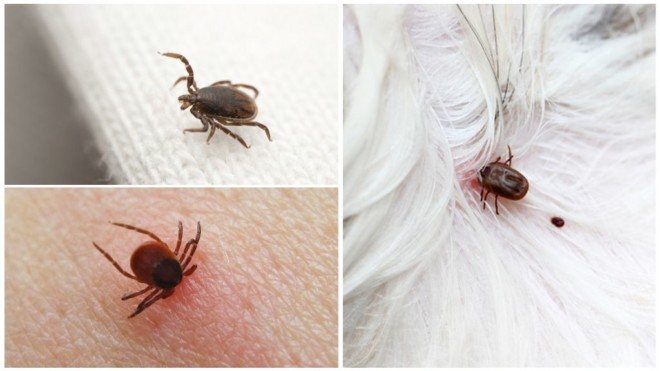

Regarding blood-sucking parasites, they wait for their victims in shelters, most often these are thickets, bushes, tall grass. They get on animals or people and are held on it by suction cups and claws on their paws. In animals, they make their way through the coat of hair to the body and stick.
Getting on people, they look for any passages on the clothes to get to the body. They prefer to suck on areas with thin and soft skin, more often it is the neck, armpits, head, groin. All bloodsucking are dangerous to humans and animals, as they are carriers of dangerous diseases.
They differ in the color of their body, often in hungry individuals one color, for example, brown, and after saturation, they can be gray, red, there are yellow, spotted and other colors.
How ticks live and bite
Ixodid ticks are specialized blood-sucking parasites of animals and humans, the largest representatives of the genus. In the warm season - from early spring to early autumn - it is they who begin the "hunt".
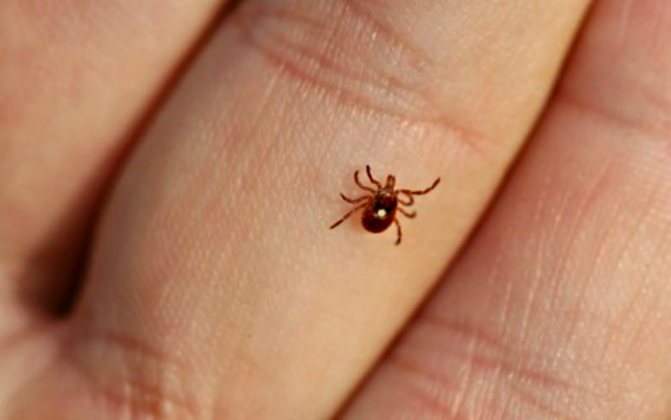

Ticks are active and bite people and animals from spring to autumn.
Many are convinced that a tick can only be found in a forest, but this is not the case. In the urban environment, the parasite can be introduced with flowers, brushwood, pets (for example, dogs or cattle). Known and not isolated cases of tick attacks in squares and parks. Ticks inhabit animal habitats, pastures, pens and wait for victims there. It is preferable for the parasite to hunt on bushes, in grass and other low vegetation - so it easily, and, most importantly, quickly climbs onto the victim at the first opportunity.
Having settled in ambush, the tick waits for the prey long enough: in the spring, after the winter hibernation, it starts hunting, in the absence of the prey during the warm period, with the onset of cold weather it again goes “for wintering” until spring, after which it “wakes up” and continues to hunt.
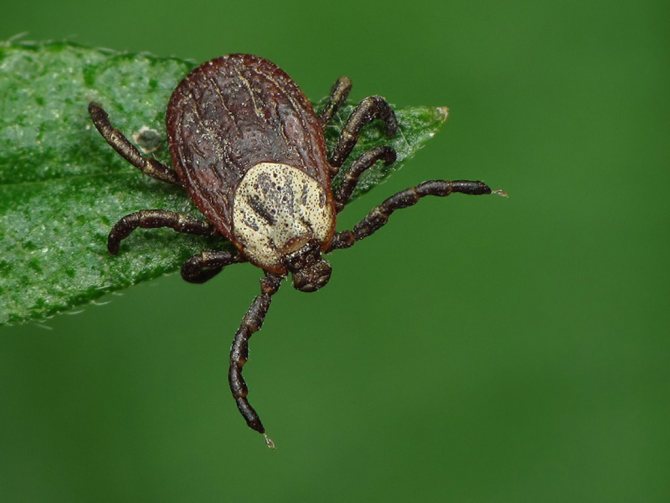

A hungry tick can spend whole days, weeks and months waiting for a victim, falling into suspended animation for the winter
Thanks to its well-developed sense of smell, it determines the approach of a potential host at a distance of up to 10 meters by earth vibrations, heat and smell. Feeling the "prey", the tick, like antennas, pulls forward the front limbs in order to most accurately catch the direction of movement of the victim and catch on when it is near.
Getting on the "owner", the ticks for a long time, sometimes for hours, look for places of suction... Their oral organ has the form of a head protruding forward, adapted for cutting the skin and firm and long-term fixation on the host's body.
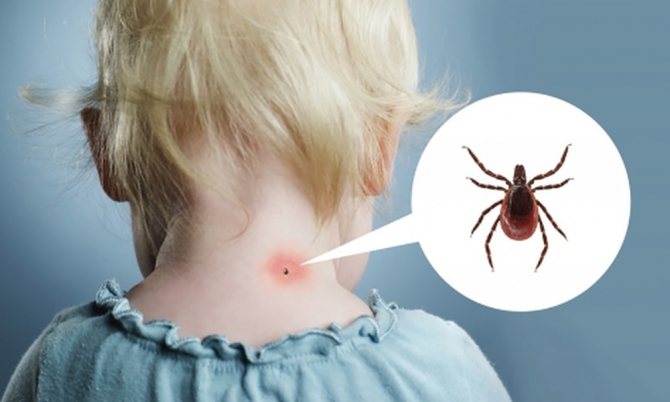

The tick does not bite right away, it can spend 1-2 hours choosing the most tender place to bite
Thanks to the natural anesthetic in the saliva, the bites are painless. Adult ticks suck blood from 1 to 12 days. The duration of the bite will be influenced by a number of factors: the developmental phase of the tick, gender, how long it will bite through the skin... These nuances are discussed in more detail below.
There is information that for the first 12 hours he perforates the skin and does not yet suck blood. But it is worthwhile to understand that this is inaccurate information, if only because on the human body in different places the skin is of different thickness, and in a child it will, in principle, be thinner than that of an adult. Therefore, it is best to carry out inspections as often as possible.
After 1-2 days from the beginning of the bite, there is a feeling of a slight pulling pain, since a local inflammatory reaction develops at the site of suction, sometimes accompanied by suppuration. The bite wound heals slowly and itches a lot.
Types of ticks
Next, we will get acquainted with the main types of ticks, find out how and what they eat, and get acquainted with the characteristics of each of them.
Ixodids
The favorable conditions include a moderate microclimate. Their habitual habitat, shrubs, grass, tree leaves. They are protected from external factors by a reliable and strong chitinous shell, which is located on their body. In terms of size, the adults reach a fairly large size. There are some that reach 2.5 cm in length. They inhabit almost the entire territory of the Eurasian continent.
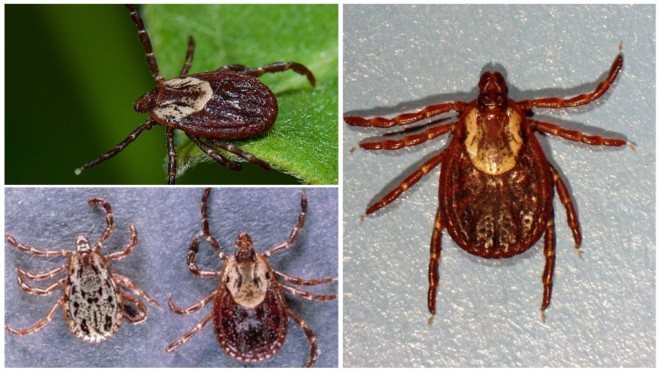

They attack wild and domestic animals, and people are also frequent victims. When they attack their victims, they firmly stick to the skin, on which they can spend several days. They multiply very quickly and in large numbers. The female can lay up to 17 thousand eggs in one season.
Argasovye
They differ in rather soft unprotected skin. The head is very small in size and only a barely noticeable protrusion on the body is noticeable. But I attack victims very noticeably, since the bite is accompanied by severe pain. When bitten, they secrete enzymes that cause a reaction in the body in the form of a rash on the skin.
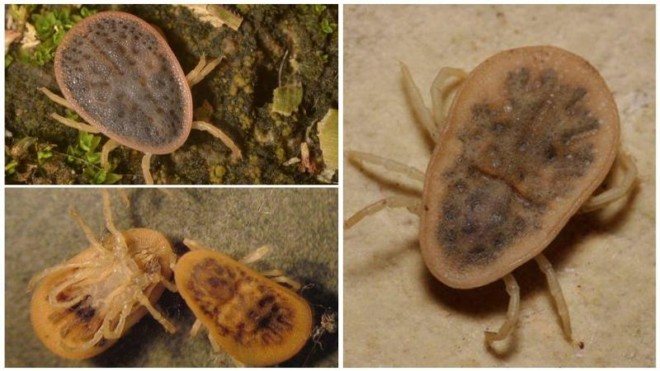

In addition, severe and prolonged itching appears after the bite. Most often, poultry and animals are attacked, but people also become their victims. Their habitats are chicken coops, outbuildings, and can be found in bird nests.
Armored
They do not belong to parasites, since their diet does not include the blood of animals and humans. But at the same time, they still pose a danger to animals and birds. The fact is that their diet consists of natural food, for example, lichens, mushrooms, plants, but other than that, they do not neglect carrion.


This is the reason that they carry various types of helminths. They parasitize most often on the surface of the soil, but some live on trees.
Gamaz
The life cycle is about six months. They are rather small in size, adults grow no more than 1mm. Rodents and birds become their victims, they live in holes, nests and chicken coops.
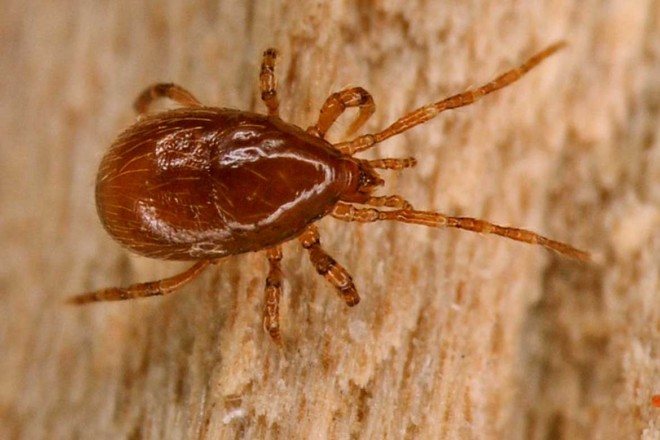

After their attack, the birds lose a large percentage of feathering, in addition, due to severe itching, scratching wounds appear. Large colonies can wreak havoc on an entire farm.
Subcutaneous
These are microscopic individuals that parasitize under the skin of humans and animals, causing enormous trouble. Without treatment, they will proliferate and live under the skin for years.
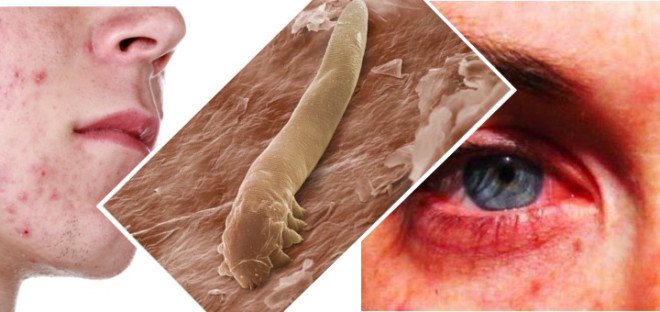

They cause irritation and severe itching. The life cycle, although short, but the female is able to lay 100 eggs in 3 months of her life, the development of which takes only a few days.
Scabies
They are dangerous enough for humans and animals, they can lead to the development of scabies, a disease that is difficult to treat and leads to severe complications. When they attack their victims, they inflict many bites, which are microscopic passages for parasitizing them.


This causes unbearable itching and skin reactions, in the form of irritation and inflammation.The life cycle of an individual is no more than 1.5 months, but no matter how long the female lives, she lays offspring several times in a short period.
Ear
This species is parasitic on animals. They live in the auricles, which causes great discomfort to animals. Due to severe itching, the animal combs the ears to the wounds, where infection can easily get. Without treatment, complications appear that are quite dangerous. They are not dangerous for people.
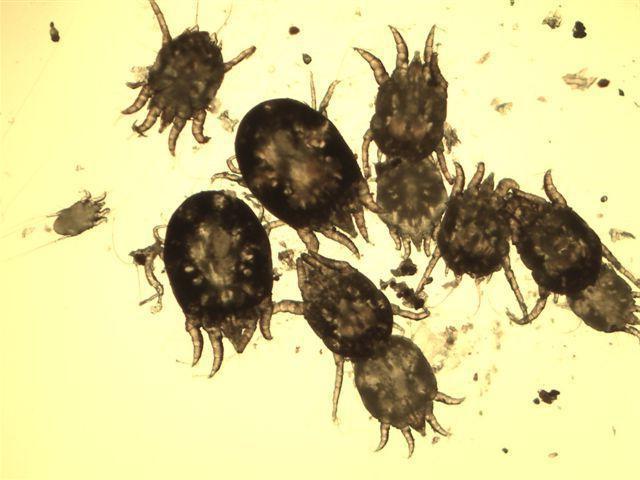

Dusty
These are very small individuals that cannot be seen without magnifying devices. Their diet consists of dead particles of the epidermis. They live in feather and down pillows, for this reason they are called linen and pastel.
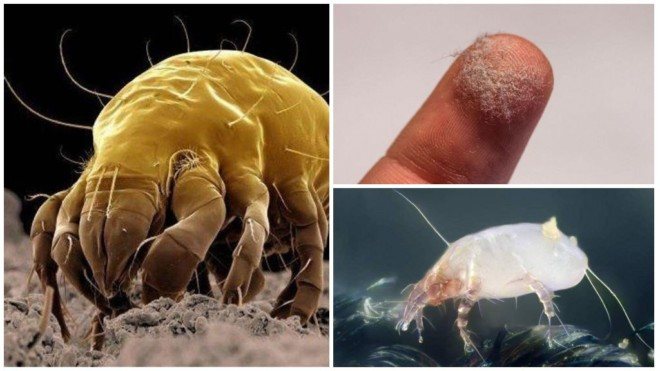

They do not bite, but their waste products are dangerous for a person, which can lead to allergic reactions and the development of asthma, which is practically impossible to treat.
Spiderweb
These pests pose a danger to garden and vegetable garden crops, home plants, greenhouses, greenhouses. Their diet consists of plant sap; large colonies are capable of destroying not only the plant, but also the fruit tree.
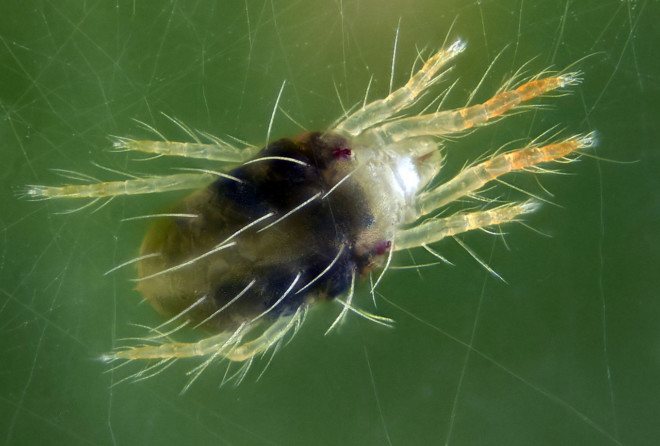

In addition, they often infect plants with diseases such as gray rot. The product of their vital activity is a thin cobweb, which they wrap around the leaves and stems.
Water (sea) mites
They parasitize molluscs and other aquatic life. There are those who prefer fresh water, but there are those who live in salty sea water.
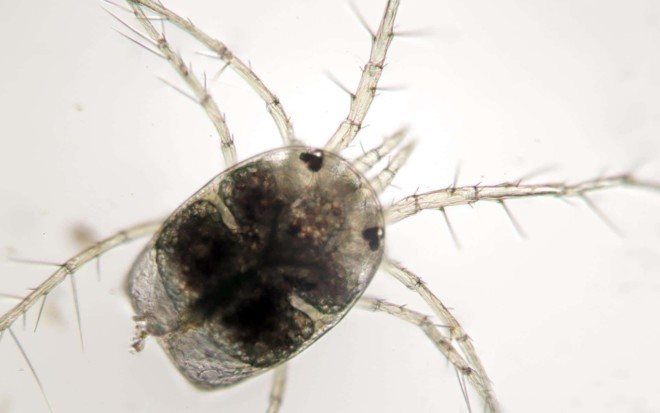

Carnivores
They do not pose any danger to people and animals; on the contrary, they help in the fight against pests. They eat their congeners, which damage crops like spider webs. Quite often, people use them in greenhouse and greenhouse farms.
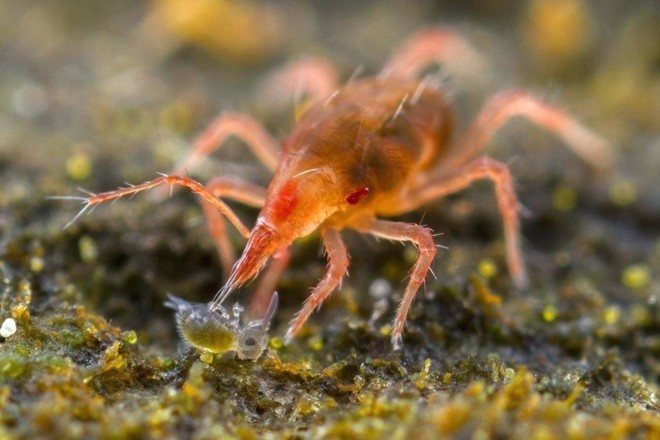

Barn
These small persons are capable of causing enormous damage to food, grain, flour. Their waste products lead to the fact that the products become infected with fungus and mold, and become unusable.
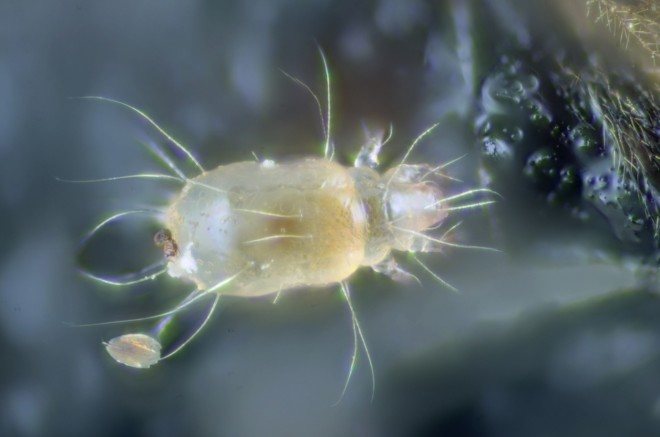

Pasture
These are inhabitants of forest and forest-steppe zones. They pose a great danger to humans and animals, since they are carriers of serious diseases such as encephalitis, plague, fever and others. Most often found in the southern part of the country.
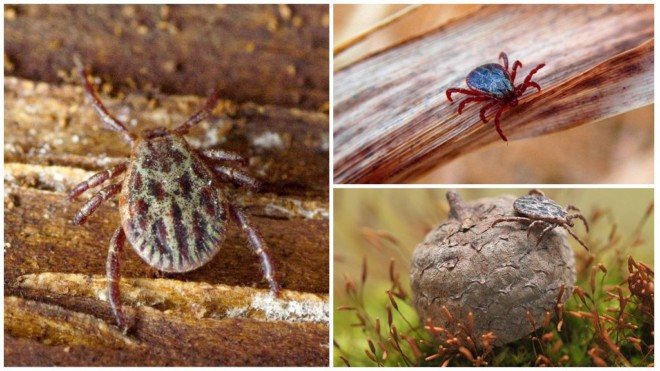

Brown dog ticks
They are especially dangerous for dogs, they are safe for people. Their habitat is coastal zones, but they are found in absolutely any territory.
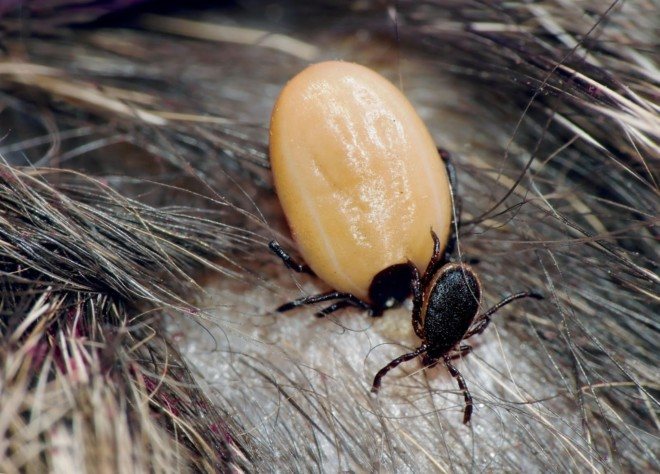

What diseases does an arthropod suffer?
The bite of a taiga tick is fraught with many dangers. These parasites are carriers of serious diseases. Ixodid ticks of this species carry Lyme disease (tick-borne borreliosis), the causative agents of which are borrelia, and tick-borne encephalitis. Also, through the bite of these parasites, causative agents of babesiosis, ehrlichiosis, tularemia, relapsing fever and other more rare infections can enter the bloodstream. The danger of encephalitis is due to the lack of specific treatment.
Parasitology knows about at least 18 pathogenic agents carried by these ticks: 8 rickettsia, 3 ehrlichia, 4 borrelia, 3 bartonella. This taiga inhabitant is so dangerous that it can be the cause of human death.
Distribution mechanism
These small pests and parasites cannot fly and travel long distances. But nevertheless, they expand their habitat quickly enough and perfectly adapt to new conditions.
They do this thanks to their victims, by sucking on the victim, they are able to enter new territories and multiply rapidly. If we talk about ixodid parasites, then they prefer the temperate climate of Eurasia. No less dangerous dogs and taiga live more in Siberia.
Harmfulness
The common spider mite harms at all stages of development, except for hibernating females. The mites pierce the epidermis from the underside of the leaf and suck out the plant sap along with the chlorophyll grains. At the injection sites, the cells become discolored and die off.The damaged areas gradually merge and occupy the entire leaf blade. Outwardly, this is manifested by a change in the color of the leaf to marble, then brown and final drying of the leaf.
Damaged plants die when there is a lack of moisture.
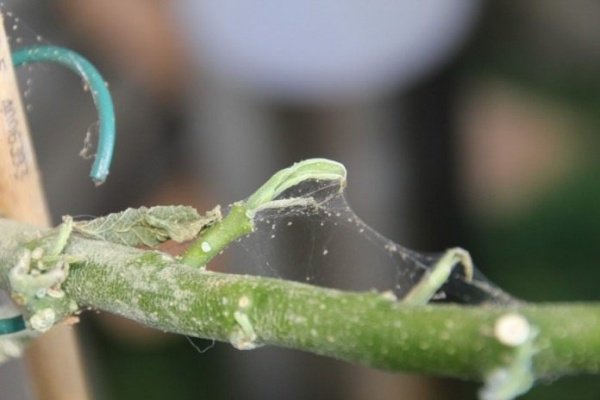

MITE ON ROSES
On decorative flowers, including roses, spider mites settle when favorable conditions arise. They prefer a dry and warm microclimate, but cannot stand high humidity. In the absence of frequent watering, with dry soil in the garden or in indoor conditions, the risk of invasion and transition between plants increases dramatically, which can be fatal for roses.
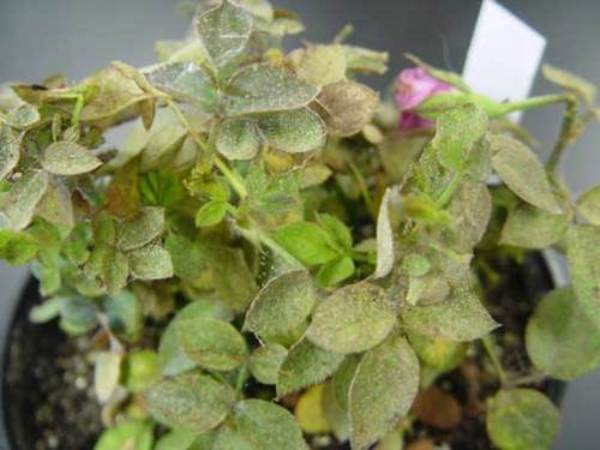

The places of parasitic influence of the tick are covered with white spots - it is their presence that should alert and suggest that the rose is affected by the tick. Over time, these spots grow, and the axils of the leaves are entangled in a thin whitish cobweb. The affected leaves turn yellow, dry up and then fall off. If you do not take measures, then the cobweb can envelop the bush completely, including the buds, which are mummified and then fall off. When multiplied, the population looks like a large swarming red mass. In this case, the plant can completely lose leaves and flowers, and the stem is covered with a strong thread of cobweb.
Life span
Each species has its own periods of the life cycle, speaking of the shortest, they are several days, but the largest ones reach several years.
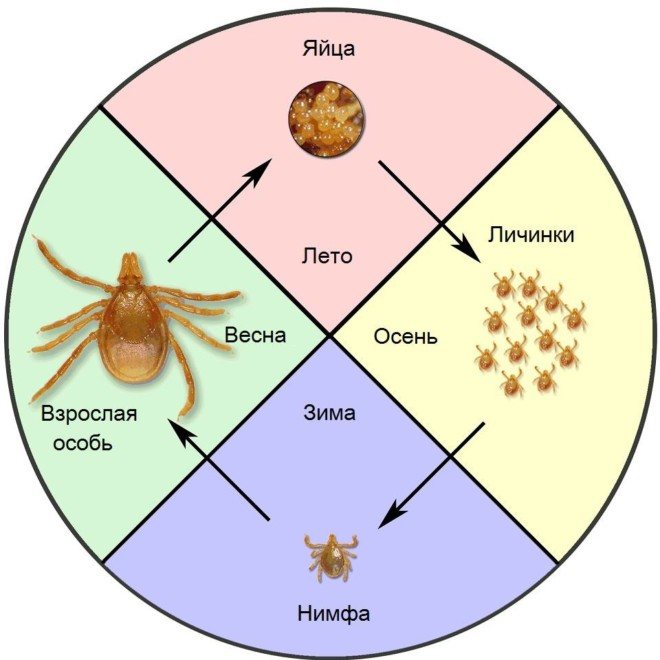

For example, the dusty one lives no more than three months, while the life period of the taiga one is about 4 years. It should also be said that they can go for years without food.
Clutch of eggs
Females lay eggs from late spring to early summer. In order for the female to postpone future offspring, she needs to be saturated with blood. One female is capable of laying up to 3 thousand eggs.
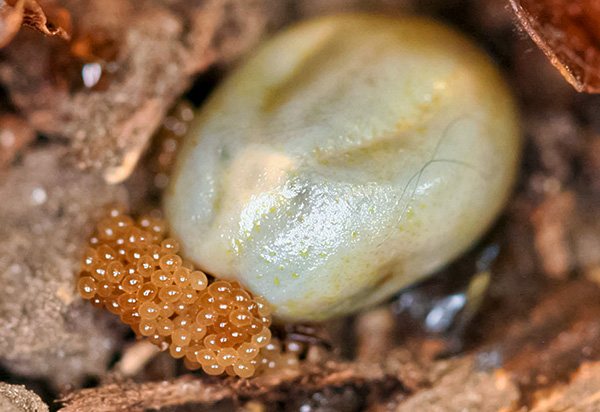

If we compare the size of the eggs and the mites themselves, then they look quite voluminous. They are a double shell in which the cytoplasm and the nucleus are located. Depending on the species, they can have different shades and shapes.
Breeding features
Before considering the usual process of reproduction of ixodid ticks, it is necessary to understand live birth. This method of reproduction refers to only two types, it consists in the following. A fertilized female bears offspring in itself, when the eggs mature, she dies. Since this occurs in the fall, the offspring hibernate in the mother's body. With the arrival of spring, when it is warm, the stage of egg development ends and larvae appear.
They appear in the mother's body and begin to gnaw their way out, thereby satisfying hunger and receiving the necessary nutrients for development. With this method of reproduction, the offspring receive much less nutrients than where the eggs are laid.
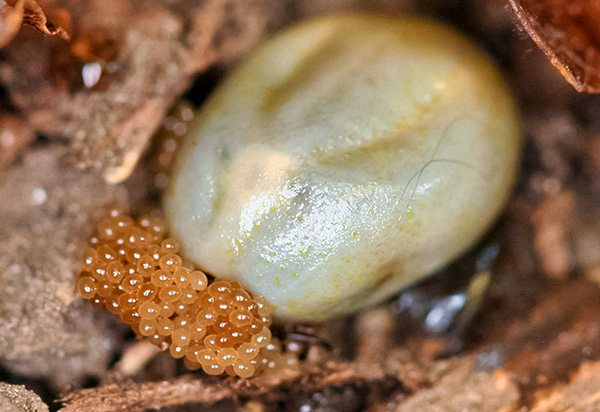

Now let's look at the usual way of reproduction for ticks. In fact, the fertilization process itself is not a complicated procedure, there is no need for preparation and special conditions. The male is looking for a female, with the help of suckers on the paws, it is fixed on her body and fertilization is carried out. Speaking of males, most often they die after mating, but if after the first mating there is another female nearby, then he can fertilize her too, and only then die. But between these processes, he definitely needs to get enough blood.
These parasites also have an interesting feature. The fact is that the female is able to lay eggs without the participation of the male. In other words, in order to lay offspring, she does not have to mate at all, laying of eggs will occur in any case. The only difference is that when mating, there will be both males and females in the offspring, and without him, only females.
Transmitted diseases
If a tick is bitten, it does not mean that a person will necessarily get sick, since only infected individuals are carriers. But at the same time, it should be understood that the probability of contracting dangerous diseases is always present.
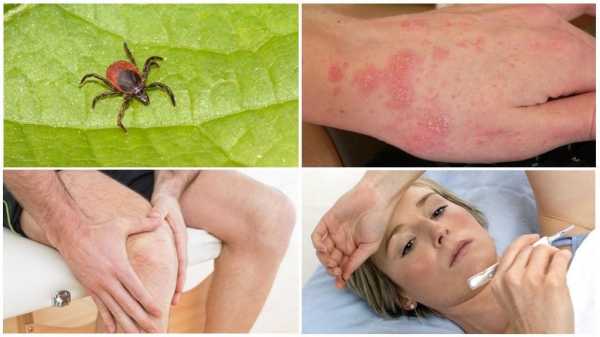

The most serious diseases include encephalitis, Lyme disease, ehrlichiosis, in addition, there is a possibility of contracting typhus, babesiosis, fever, tularemia. They are dangerous, serious complications that, without proper treatment, lead to disability and even death.
Encephalitis
It is the most serious disease for humans. When the virus enters the body, disorders occur in the brain. In this case, the human immune system, in the fight against the virus, attacks its own tissues, which is wrong. There are dangerous regions where there is the greatest probability of infection, but, unfortunately, even if you do not visit these territories, the risk of infection is present during a regular walk in nature or in the park.
If an infected blood-sucking animal attacks a cow or goat, then the milk also contains the virus and, when it enters the human body, infects it too. Therefore, it is not recommended to consume raw dairy products in high-risk areas.
The virus spreads through the body very quickly, affecting the brain. A person has convulsions, paralyzes muscles and limbs. The person suffers from severe headaches, loses consciousness, he feels sick. This condition leads to disability and death. To prevent the disease, antiviral drugs are prescribed to the patient, and immunoglobulin is administered during treatment.
Lyme disease
In this case, infection occurs through tick saliva, which contains spirochetes. In addition, if the infected parasite has been crushed, then the infection can simply get through the wound. The first symptoms of infection include a red circle at the site of the bite, in the center, which has a lighter shade.
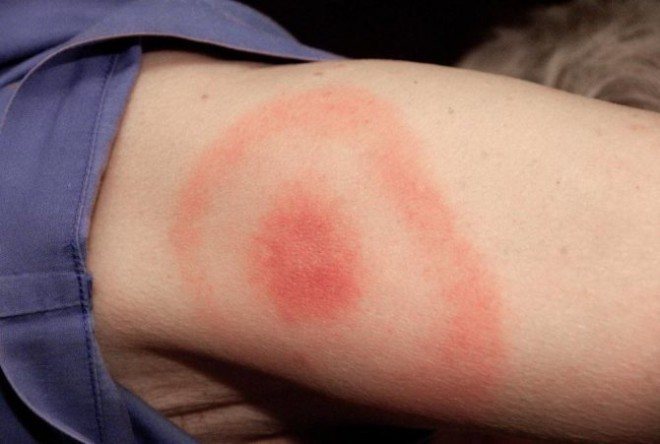

With this disease, the joints, nervous and cardiovascular systems are affected. A person experiences apathy, depression, insomnia. Hearing loss, paralysis is observed. The greatest danger is posed by complications of the cardiovascular system. During treatment, the doctor prescribes antibiotics.
WHAT GARDEN PLANTS ARE AFFECTED BY SPIDER MITE?
The common spider mite (Latin Tetranychus urticae) loves berries, grapes, stone fruits, fruits, cereals, legumes, decorative street and indoor crops.
The Atlantic spider mite (Latin Tetranychus atlanticus) damages cotton, clover, alfalfa, strawberries, apple trees, and pears.
Red spider mite (Latin Tetranychus cinnabarinus) is a frequent visitor to balsam, lemons, nightshades, calla lilies, roses, cineraria and orchids.
The hawthorn mite (Latin Tetranychus viennensis) is found on Rosaceae: plum, cherry plum, hawthorn, apricot, mountain ash, irge, apple.
The date spider mite (Latin Oligonychus afrasiaticus) feeds on the juice of melon, eggplant, date palm, and various grains.
Turkestan spider mite (lat.Tetranychus turkestani) often settles on Abutilon (cable car) Theophrastus, common cuff, acacia, cotton, sunflower, alfalfa, common burdock, field bindweed, swan, melon, cucumber, watermelon, pumpkin quince, ordinary hop, white willow, reeds, plum, nightshade, clover, eggplant, corn, grapes, elm.
Polyphagous petrobia (Latin Petrobia latens) affects more than 200 economically important plants for humans, including various cereals, onions, garlic, asparagus, strawberries, cucumbers, spices, clover and other legumes.
The red fruit mite (Latin Panonychus ulmi) is mainly found on deciduous trees of the Rosaceae family, and also attacks grapes, alder, elm, mulberry, oak, linden.
The citrus red mite (Panonychus citri) prefers tangerines, lemons, oranges and other citrus crops.
How to protect yourself
Before a trip to nature, you should take all possible measures to minimize the attack of bloodsucking. The first thing to do is choose the right clothes. It must ensure that the body is protected so that the parasite cannot get to the skin. To do this, the pants must be tucked into socks, the shoes must be high and tight to the body. A jacket must be chosen with a tight-fitting collar and cuffs, it is tucked into the pants, it is better if it has a zipper. A headdress is required.


Choose clothes in light colors for nature. Blood suckers are slow enough and when they get on clothes they cover the distance for a very long time to find access to the body, so they will be easier to spot on light-colored clothes. Treat clothing with repellent. Inspect your clothes more often, and when you return, be sure to inspect the body. They can hide in any plants, so refrain from collecting bouquets.
Acaricidal agents
Such protective drugs are available in the form of a spray and are quite effective and fast-acting. The active components that make up the composition affect the insect's nervous system, which leads to paralysis, and then to death. But remember that such preparations are allowed only on clothes.


The active ingredients are quite harmful in direct contact with human skin, and the vapors are also poisonous. For the product to be absolutely safe, it is necessary to use the spray correctly. To do this, it is necessary to process the clothes in the fresh air and leave to dry completely. Only after the clothes have dried can they be put on, the effect appears for 2 weeks.
Insecticidal-repellent preparations
This group of drugs is quite popular due to its universal use. They are used against ticks, mosquitoes and other types of insects. In addition, they can be applied directly to the body and clothing. Absolutely safe, but at the same time very effective.
Vaccination
For people who live in dangerous regions where the risk of contracting tick-borne encephalitis is increased, vaccination is a mandatory safety measure. In addition, it is held by people who are going to visit the region for work, tourists, and other groups of people. Today it is the most effective way to protect against a terrible disease.


Vaccination is carried out in any medical institution that is licensed. In order to get vaccinated, you can contact a therapist who will tell you about the next steps. Remember that this vaccination has a number of contraindications, in addition to this, there are also side effects. There are vaccines of Russian, Austrian, German production.
Repellents
Another group of specialized tools that allow you to scare off parasites in nature. They can be applied to clothing and the body, but they have a fairly short duration after application. After weathering of the active ingredients, they become ineffective, therefore, it is necessary to reapply regularly.
Unfortunately, the use of drugs does not guarantee complete protection, so you need to be careful, avoid thickets and bushes, and regularly inspect your clothes.
It's important to know
There are times when these parasites are most dangerous. For example, in April and May, forest and dog ticks are most bloodthirsty, despite the name, they attack people perfectly, and here there is a danger of being bitten by an encephalitis tick. Where you need to go with extreme caution are parks, forests, squares.
Much depends on the weather conditions, as mentioned earlier, if the weather is unfavorable for them, then they are less active. But you always need to be as careful as possible, choose the right clothes when traveling to nature, and do not forget about specialized remedies for ticks.
What to do if blood-sucking is found on the body
If you come across a parasite that has stuck to your body, you need to remove it as soon as possible. The longer an infected individual is on the body, the higher the risk of infection. It is necessary to contact a medical institution, where they will carry out the seizure procedure and tell you about further actions. To find out if a blood-sucking person is infected, it must be taken to a laboratory for testing. Remember that going to a doctor will help protect yourself from possible consequences.
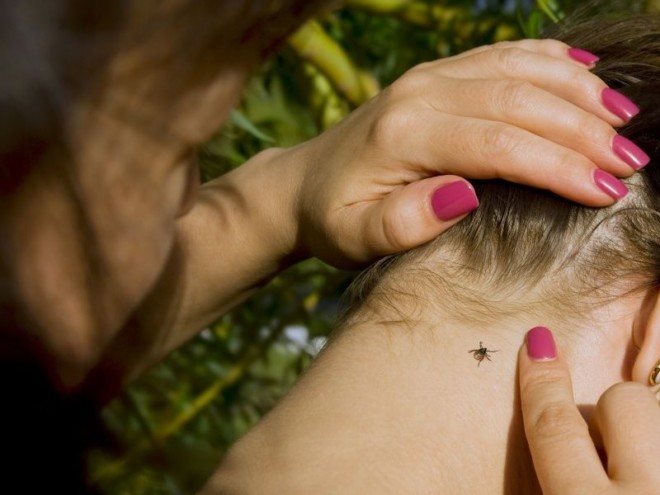

When there is no possibility of going to the hospital, the procedure must be carried out on your own. To do this, you can use tweezers or thread. Some people reach for blood-sucking ones with their hands, without using any devices, but this method is not recommended, since it is very difficult to grasp the insect correctly with their fingers.
It is required to grab the insect with tweezers or thread (from which the loop is made), as close to the body as possible. So that not only the abdomen was captured, but also the head. Next, you need to twist the individual and lightly pull it up. If you grab it incorrectly, the abdomen will come off, and the head will remain in the wound. In this case, it is imperative to pull it out; for this, a needle is used, with which you need to pick up the remaining fragment, like a splinter. If it is very deep, you should definitely consult a doctor. If it is not removed, inflammation and decay of the wound will begin.
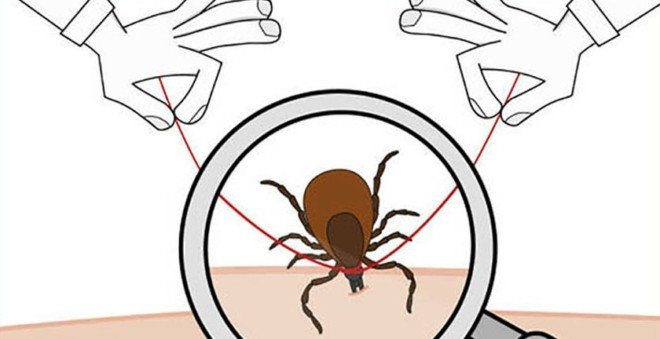

After the procedure, be sure to disinfect the wound and hands. You can use iodine, hydrogen peroxide, brilliant green. Next, the insect must be placed in any container that is tightly closed and handed over to the laboratory as soon as possible for analysis.
During the procedure, you cannot make sudden movements, use force, squeeze blood-sucking ones, so it can be very easily damaged, and this will increase the chances of infection. It is forbidden to spray the parasite with oil or other oily liquids. Such methods lead to the death of the sucked individual. Before death, they secrete a large amount of saliva, which contains the infection.
Why is the bite of an ixodid tick dangerous?
It is important to understand what danger a meeting with this arachnid poses for a person or animal. Ticks carry pathogens of infectious diseases transmitted by a vector-borne route:
- tick-borne encephalitis;
- borrelliasis;
- tularemia;
- typhus, relapsing fever;
- piroplasmosis;
- rickettsioses.
Tick-borne encephalitis can be suspected if, after contact with the pathogen, the following signs appear: a sharp increase in body temperature, headache, pain in the eyeballs, muscles, joints, lethargy, lethargy, impaired consciousness, meningeal symptoms are possible. The result can be persistent paresis, paralysis, episyndrome. It is extremely difficult to deal with the disease and its consequences. Mortality from tick-borne encephalitis is high.
What is the danger of a microorganism that causes borrelliasis? The disease can occur not only with a bite, but also when an ixodid tick is crushed with fingers. It is characterized by a staged course: at first, the clinic, typical for viral infections, comes to the fore: hyperthermia, pain in muscles, joints, a characteristic migrating tick-borne erythema is found on the skin (it has an annular shape, the surface is hot to the touch, itching is possible), then neurological and cardiac symptoms (meningeal manifestations, pericarditis, myocarditis). With a longer course of the disease, large joints are affected. Lyme disease tends to become chronic, the clinical picture is presented by the phenomena of arthritis, osteoporosis.

